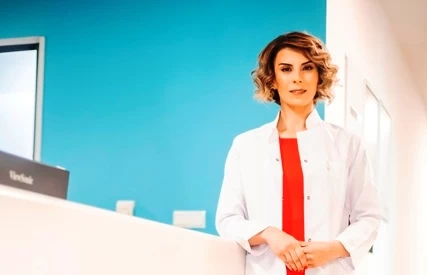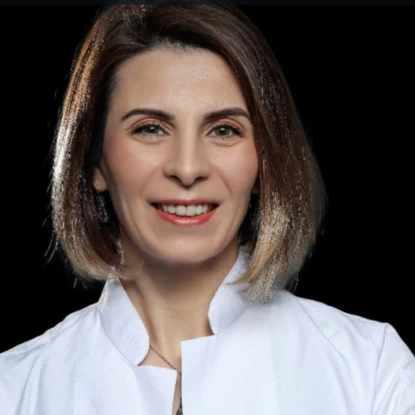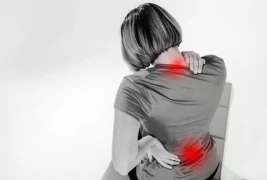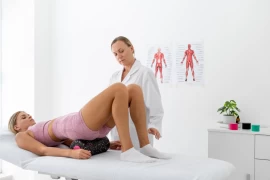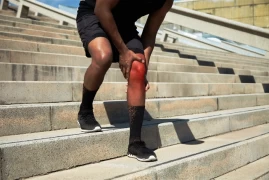
The Importance of Complementary Medicine Practices
- The Importance of Complementary Medicine Practices
- For Physical Medicine and Rehabilitation Physicians
- But why?
- But how?
For Physical Medicine and Rehabilitation Physicians
"Complementary Medicine Practices" refer to treatment methods that complement the guidelines of modern medicine and provide a holistic approach to patient care.
As emphasized in the World Health Organization's definition of "Health," a "Physician" aims to achieve complete well-being for an individual in terms of their physical, mental, and social aspects.
As "Physical Medicine and Rehabilitation Physicians," our most critical responsibility is not only to treat conditions that lead to disability but also to prevent their recurrence and enhance the long-term quality of life through "rehabilitation."
While a small portion of the cases that come to us involve acute complaints lasting less than 6 weeks, the majority of our patients often present with chronic complaints lasting more than 3 months. The longer the delay in seeking medical attention, the more time it takes to achieve a state of well-being. In the acute phase, we can often provide solutions within the boundaries of Western Medicine's knowledge. However, chronic issues make achieving a resolution more complex and require greater effort.
But why?
The structure of our body maintains a balance through the rhythmic coordination of muscles and fascia that surround the skeleton, enabling our range of movement. To sustain this balance, the circulatory system must function seamlessly, and organs must perform their functions. Adequate circulatory function is crucial for the harmony of nerve transmission, blood and lymph circulation, biochemical reactions, and the interaction between internal organs and muscle and fascia tissues. When the circulatory system falters, it can disrupt the interaction between these interconnected factors.
"It is the mind that shapes the body," said Ludwig Wittgenstein.
Another important factor to remember is that we are not just physical entities; our psychological and social aspects can also impact our bodies. Just as we can influence our bodies, these factors can influence our bodies. Outlook on life, expectations, cultural environment, emotional states, economic conditions, personality traits, and dietary habits all interact within the positive or negative cycles of the physical body.
In cases of chronic illnesses, the various interconnected structures of the body influence each other in complex ways. Therefore, treatment methods aimed solely at alleviating symptoms are often insufficient. Seeking support from complementary medicine practices, which take a holistic perspective and evaluate each individual within their unique context, is important.
But how?
When a person with general body pain or localized pain presents, the first question we ask is usually, "How long have you had this complaint?" The answer to this question guides the direction of subsequent inquiries. Answers from individuals with chronic conditions often reveal a common truth: the physical body, mental state, and social life are interconnected in a vicious cycle. Pain can disrupt sleep patterns, increase stress levels, impact digestive health, and strain familial and work relationships. Pain relievers or physical therapies may provide temporary relief, but restoring the body's balance and harmony may require actions such as improving nerve transmission and revitalizing circulation.
For this reason, the inclusion of ACUPUNCTURE and NEURAL THERAPY in our treatments holds significant value, supported both by scientific studies and our own clinical observations. Additionally, we can utilize PHYTOTHERAPY for pain control, edema reduction, inflammation suppression, and detoxification. AROMATHERAPY, which harnesses the sense of smell, can be employed for sleep quality, digestive health, and emotional well-being.
The widely known CUPPING-HIJAMAH therapy is an effective treatment method for reviving the aforementioned fascial tissue. Fascia envelopes muscles, bones, ligaments, nerves, blood vessels, and organs, creating a highly interconnected structure with intense nerve stimuli. The proper function of fascia is crucial for the systematic operation of the body.
Long-lasting pain can lead to symptoms such as fatigue, weakness, and weakened immune systems. Therefore, MAJOR OZONE (intravenous ozone) or RECTAL OZONE (rectal ozone) therapies can be considered. Moreover, LOCAL OZONE therapy can rapidly reduce inflammation in cases of localized joint pain and spinal disc herniation, accelerating the healing process through cellular stimulation.

After Orthopedic Surgery and Sports Injuries:
When patients seek support for regaining physical function, the initial step is to commence a personalized exercise program. This serves as a foundational method to accelerate and enhance the healing process. Additionally, seeking support from complementary medicine methods can offer significant benefits. For non-prosthetic joint surgeries, LOCAL OZONE therapy (intra-articular ozone) can stimulate cartilage synthesis to expedite healing, while BAG OZONE therapy can be considered for delayed wound healing cases. Application of OZONE CREAM and AROMATHERAPY can yield positive results for various issues. After surgical interventions, disturbances in fascial transmission and circulation may occur. To ensure a swift and proper healing process, support from NEURAL THERAPY and ACUPUNCTURE can be highly effective. Ligaments, known as ligaments, are essential for maintaining proper joint dynamics. PROLOTHERAPY can be employed to increase collagen production and strengthen ligaments, facilitating faster and more effective functional recovery.
For Patients with Neurological Disorders such as Stroke (Hemiplegia), Spinal Cord Injury, Parkinson's, Multiple Sclerosis, etc.:
For patients undergoing lengthy treatment processes due to neurological conditions, it is crucial to improve both their physical disability and emotional well-being. Regular interval check-ups under medical supervision should be conducted, and a tailored rehabilitation program should be devised. In cases of muscle looseness or excessive rigidity resulting from brain and spinal cord damage, balancing these effects and increasing blood flow to relevant organs are vital. ACUPUNCTURE and NEURAL THERAPY treatments are employed for this purpose.
Many patients may also have accompanying health issues such as hypertension and Type 2 Diabetes Mellitus. In addition to oversight from related medical specialists, MAJOR OZONE therapy can be effective in regulating circulatory physiology and insulin secretion.
For pressure sores that develop in the hips, heels, and elbows due to prolonged immobility, positive outcomes can be achieved through OZONE CREAM and AROMATHERAPY applications.
Furthermore, CUPPING-HIJAMAH therapy can stimulate the fascial transmission system and support nerve communication. These methods offer a holistic approach to treating the issues caused by neurological diseases, thereby enhancing patients' quality of life.
As expressed by the ancient father of Medicine, Hippocrates, "There is no disease, only patients with diseases." Each patient is unique, and disease symptoms do not always manifest in the same way. Thus, the selection of complementary medicine treatment methods, with a wide array of options, should be determined by a physician who comprehends the patient's medical history.
